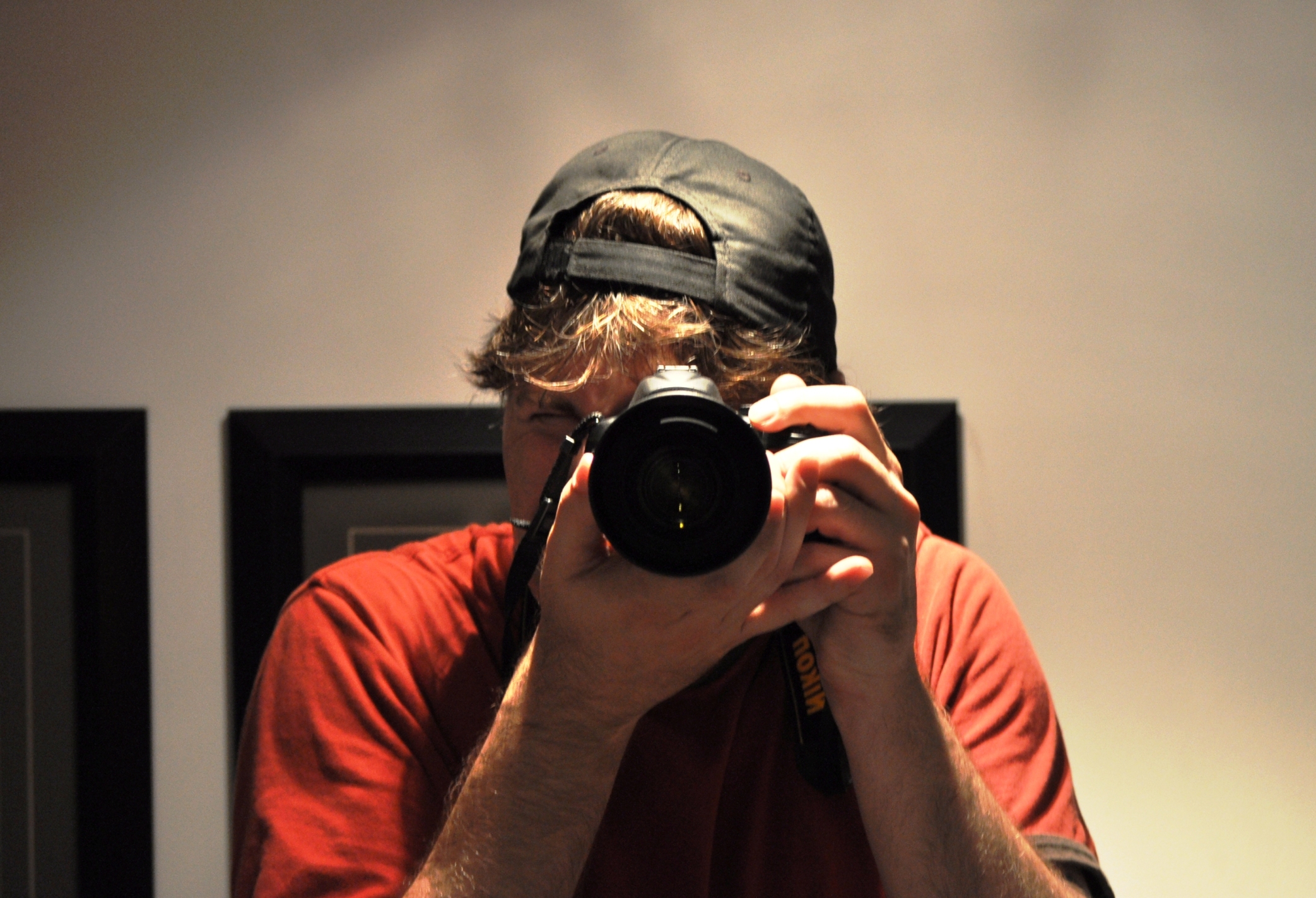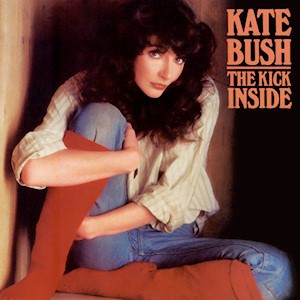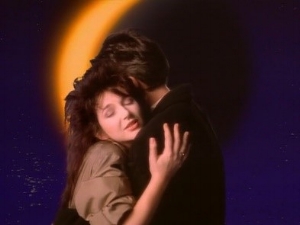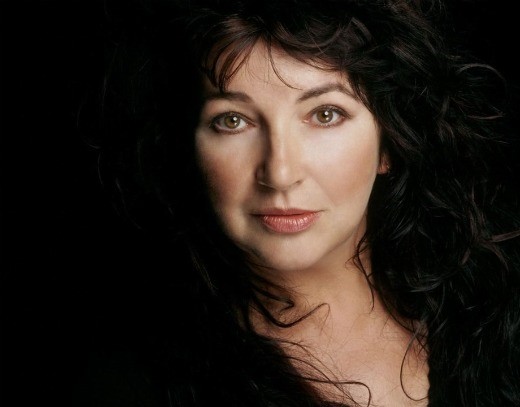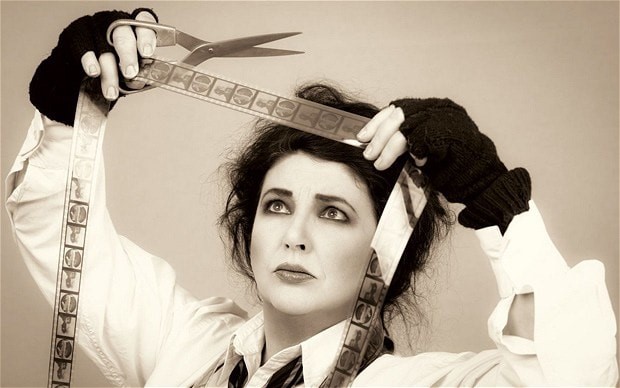Strange Phenomena: A Kate Bush Retrospective
Click below on the streaming service of your choice to listen to the playlist as your read along.
Kate, 1975
Her voice was unique. Her music was distinctive. Her videos were different. She is one of the most beloved and successful female British artists of her generation. I could simply leave this retrospective of Kate Bush right there and let the playlist tell her story, but then what kind of fun would that be? There’s so much more to discuss of Ms. Catherine Bush, a true original.
The Playlist
Strange Phenomena
The Man with the Child in His Eyes
Wuthering Heights
Wow
Don't Push Your Foot on the Heartbreak
Babooshka
Army Dreamers
Breathing
Sat in Your Lap
Suspended in Gaffa
Night of the Swallow
Running Up that Hill (A Deal with God)
Hounds of Love
The Big Sky
Cloudbusting
Don't Give Up
Love and Anger
Reaching Out
Deeper Understanding
Rubberband Girl
And So is Love
King of the Mountain
Pi
How to be Invisible
Nocturn
Wild Man
Born in 1958 in Bexleyheath, a suburb of London, and raised on a farm in nearby Welling, Kate was brought up into an artistic lifestyle since her parents and two brothers all played instruments or performed (though her father was a doctor by trade). By her early teens she could play the piano and violin and was starting to write her own music. Her first demo tape, offered to record labels when Bush was just sixteen, didn’t garner interest but did catch the attention of Pink Floyd guitarist, David Gilmour (while he himself was putting together the album, Wish You Were Here). He connected Kate to producer Andrew Powell and former Beatles engineer, Geoff Emerick, and paid for them to record professional demos for her. These got Kate signed to EMI, who then sat on her contract for two years while she finished school and used her advance to take dance lessons from Lindsay Kemp, the same who had taught mime to David Bowie. There was disagreement between Bush, Gilmour and EMI as to why no music was released during those two years (given EMI’s handling of The Sex Pistols, perhaps they needed better A&R talent in that office), despite her songs seemingly being ready for prime time. Regardless, she wouldn’t record her first album until August 1977, having just turned nineteen.
“Strange Phenomena”; “The Man with the Child in His Eyes”; “Wuthering Heights” \ The Kick Inside (1978)
Released in February 1978, her first album was a stupendous effort for such a young artist, especially considering the songs were all written by her – some from as far back as when she was thirteen. Recorded with several accomplished session musicians as well as her brother Paddy (as would all her albums), the album mixed jazz accents with strong blues melodies. It was very much a 1970s product, saturated with lively bass lines, string accents, sax solos, rich drumming, and colourful piano. It is now notable within her discography as being the most melodious. Kate’s voice would always be high-pitched and very emotive, but at this young age was especially high-toned. The Kick Inside might have been written off as the gushing of an emotional teenager if the songs weren’t so polished and impeccably written.
Make no mistake, this young woman was in charge despite the established talent with which she was surrounded. It was her insistence that the first single be “Wuthering Heights,” which in retrospect seems like a no-brainer, but at the time would have been a rather idiosyncratic choice. It remains one of her best known tunes and went to #1 in the UK. Inspired by a movie of Emily Bronte’s famous romantic novel, it was a fantastic song and one that has remained one of my favourites since I first heard it in the early ‘80s. The drama of her voice and music instantly revealed the unique talent of this artist. Moving from subtle, breathy notes to soaring crescendos, the song drew you into its drama. When she sings the chorus, “Heathcliff, it's me, I'm Cathy / I've come home, I'm so cold / Let me in through your window,” I still get goosebumps from the incredible melody and phrasing. Kate was the first female to reach #1 in the UK with a self-written song – simply an amazing accomplishment for a teenager’s first release. What is also astonishing is that “Wuthering Heights” would remain as her only career #1 single (until 2022, per the update at the end of this post).
Original UK cover
Original North American cover
The second single was “The Man with the Child in His Eyes” which went to #6 in the UK and cracked the top 100 in the US. It showed how accomplished she was on the piano and furthered exemplified the maturity of her song writing. It was another haunting and graceful melody riding on piano and strings, with lyrics of a young woman in a consuming relationship with an older man. “Strange Phenomena” was released as a single in other countries as the album gained attention over the ensuing years and was a great example of the LP’s strong blues melodies mixed with her impressive vocal.
The album was packed with many more highly engaging tracks, such as “Moving,” “The Saxophone Song,” “Them Heavy People,” and the title track, which was another beautiful, piano ballad. The Kick Inside was an instant classic of an album with no weak tracks and was a great introduction to an enigmatic singer.
“Wow”; “Don’t Push Your Foot on the Heartbreak” \ Lionheart (1978)
It is estimated that Kate wrote over two hundred songs while waiting to start her recording career, so it was no surprise she had an album’s worth of material to release later the same year. However, Bush felt she was rushed by the label to put out another album and was less satisfied with her sophomore effort. Her lengthy recording process would be a hallmark of her career, though she denies being a perfectionist.
While Lionheart was not as strong as the debut, it still impressed with many wonderful musical moments. The first single, “Hammer Horror,” did not click but the second, “Wow,” got to #16 on the UK chart and helped push the album to #6. It was consistent with the bluesy ballads of the first album, but this one featured more musical diversity and some of the eccentric elements with which she would become known. The lyrics referenced her views on the music industry, her apprehension about performing, and a reference to Vaseline as a sexual lubricant, which resulted in it being banned by the BBC (the mark of any worthwhile artist in Britain).
“Don’t Push Your Foot on the Heartbreak” showed she can rock, offering a scream or two, while also offering another example of her dramatic flair. The lyrics sounded less like the lovestruck teen of the first album, this time offering a more sardonic take on love and emotion, “Oh, come on, you've got to use your flow / You know what it's like, and you know you want to go / Don't drive too slowly / Don't put your blues where your shoes should be / Don't put your foot on the heartbreak.” The video in the YouTube playlist was taken from a Christmas Special the following year and nicely displayed her acting chops as well, drawn from her lessons just a couple years prior.
Neither of the first two albums gained attention in the US, though across the Commonwealth her music was gaining a foothold, charting decently in places like Australia (where “Wuthering Heights” reached #1) and Canada. Even still, in Canada it was alternative stations like CFNY in Toronto giving her exposure and not so much any mainstream stations. Her label promoted her album with suggestive pictures of her, which Bush criticized, noting it misled audiences about her talent, song writing, and musicianship. It was a look that wouldn’t be repeated, and though some of her videos would later present her in some revealing scenes, it would be her choice and within her artistic context. Promotion was also hindered by Bush’s reluctance to tour. She did a two-month tour of England during 1979, an appearance on Top of the Pops, and the aforementioned Christmas Special for the BBC. She appeared on Saturday Night Live in December 1979, which was – and still is – her only performance in North America. Reasons for lack of performances generally and no international tours are varied but inconclusive, including rumours of a crippling fear of flying.
“Babooshka”; “Army Dreamers”; “Breathing” \ Never for Ever (1980)
1980 saw Bush enter the new decade more in charge of her sound and career, now as an accomplished 22-year-old. Her third album, Never for Ever, was her first to reach #1 in the UK, not to mention being the first for a female artist to both reach #1 and to do so in its first week. The album was more varied than its predecessors in every way. The instrumentation was more diverse (much of it played by her brother) and included electronics (the Fairlight CMI, in particular) she learned while providing backing vocals to Peter Gabriel’s third album (she sang on “No Self Control” and “Games Without Frontiers”). Her voice was more measured and assured and less affected by the higher pitches of her youth. The songs travelled greater distances in breadth and challenged the listener, straying away from traditional blues melodies into edgier, more modern sounds. For those of us listening to this music from across the ocean, she was an alternative artist providing an exotic and dramatic presence amongst the heavy metal bands and cold, new wave artists of the period.
The album provided three standout singles. “Breathing” was the first and cracked the top twenty in the UK. It was another haunting ballad, this time with a menacing finish (which also closed the album), and a deeper, more gentle sounding vocal. “Babooshka” returned her to the top five and was a song about a woman testing her husband’s loyalty through letters from a fake younger woman with the nickname, Babooshka. The song rose and fell, had strange vocal accents, breaking glass effects, a fantastic vocal performance, and was an improbable hit (it was one of the year’s biggest in Australia). “Army Dreamers,” like many others on the album, used acoustic guitar to create an almost medieval sound, like you were in a king’s court listening to these songs. It was also sold wholly by Kate’s voice, something she could so often do, never shy to make the song ride her voice to incredible places and well within the upper ranges.
This album introduced us to Kate Bush the auteur, making videos such a part of her art that it likely helped compensate for the promotional gap due to her lack of touring. In “Breathing,” she was a foetus, scared to be born in an age of nuclear threat; while in “Babooshka” she was a warrior, simultaneously turning on and perplexing young teenagers such as myself (though it would be a couple more years before I started listening to her). Video shows were sprouting up all over the TV dial. MTV had been launched the year prior, and Kate was featured more prominently in that medium than she ever was on radio or on the charts. Her videos were arresting and the shows were happy to highlight them. I grew up watching Kate Bush videos and they only served to increase the mystery and allure of his seemingly unreachable artist.
Bush closed the year with the release of a Christmas song, “December Will Be Magic Again,” which reached #29 on the UK singles chart.
“Sat in Your Lap”; “Suspended in Gaffa”; “Night of the Swallow” \ The Dreaming (1982)
The fourth LP, The Dreaming, was my introduction to Kate Bush since it was in my older brother’s records. Aged twelve, my exposure to new music at that point was via what he brought back from university. So, it was the songs on this album that I knew best, and I listened to this album over and over again in my Walkman. I was also mesmerized by the cover and wondered why there was a key in her mouth. I now know it was an enactment of the album track, “Houdini,” and that she was playing the magician’s wife, sneaking a key to him. Houdini is played by her bassist and romantic partner at the time, Del Palmer.
This was the first album Kate produced on her own and she dug deep into her bag of tricks to build a fantastic musical journey full of surprises. It had more energy and there was an eccentricity that enchanted many (like me) but alienated some the wider audience gained from her prior album. The LP could not match the UK #1 achievement of the prior album but did get to #3 and even cracked the top two hundred in the US.
Opening with the frenetic “Sat in Your Lap,” the album immediately signaled this was a different Ms. Bush. She whispered and shrieked in an affected voice over a pounding beat, punctuated by piano and a unsettling synth. The song sounded like running in fear through the jungle, perhaps suggesting the title of the album was leading to disturbing places. This song would have fit nicely on a Nina Hagen album. It was also the album’s first single and peaked at #11 in the UK singles chart.
The second single was the rhythmic, “There Goes a Tenner,” which failed to gain success. It was still a great song and one of the more accessible on the LP. Left to her own devices and via her fascination with the Fairlight CMI sampler/synthesizer, her songs were packed with lots of instrumentation and sounds. Nothing on the album sounded natural, as if it was made on another planet. “Pull Out the Pin” was such a song in which her vocals and desperate incantation of “I love life” throughout made for both an intoxicating and unnerving feel.
“Suspended in Gaffa” wasn’t issued as a single in the UK and had some success as a release in mainland Europe. It was another good example of how her voice, altered and natural, dancing over piano and drum rhythms, made for an enchanting mix. The song swooped and swung through highs and lows, mixing strings and jarring piano to push the track outside of any usual genre. The first side closed with “Leave It Open,” another drum and vocal spell in which multiple vocals seemed to come from different versions of Kate. The song closed with a crashing drum sequence that released the tension built through the entire side of the album.
The second side opened with the title track, which was a chant-like, exotic song. It was unadvisedly released as the second single in the UK and charted outside the top forty. The next song on side two was one of the more straightforward tunes on the album, “Night of the Swallow.” It was a beautiful, haunting ballad that worked nicely with the following, similar track, “All the Love.” “Houdini” was the fourth song on the side and worked its way back into the strange as her voice alternated between whispers and strangled desperation, closing with a classical string piece. This set up the LP’s most frenetic, noisy, and disturbing song, “Get Out of My House.” An off-kilter and jarring end to the album, it made sure the listener wasn’t left too comfortable at the conclusion of The Dreaming, as is often the case for many dreams.
Although fans and critics were nonplussed with the album, as my gateway to Kate Bush it set the standard with me for everything she did. It was graceful, haunting, and affecting while also being jarring, disturbing, and experimental. It was uplifting and unsettling, as only a great piece of art could achieve. The early 1980s was a period of great experimentation as the post-punk movement branched into many forms, and this album represented the best of that spirit.
In the midst of releasing the singles from The Dreaming, a non-album single was released in July 1983. “Ne t'enfuis pas” was sung in French and released only in France and Canada. It was first issued as the B-side for “There Goes A Tenner” and “Suspended in Gaffa” in different regions. The B-side was, “Un baiser d’enfant,” and was a French vocal version of the song, “The Infant Kiss,” from the Never for Ever album.
“Running Up that Hill (A Deal with God)”; “Hounds of Love”; “The Big Sky”; “Cloudbusting” \ Hounds of Love (1985)
The lengthy and expensive recording of The Dreaming led Kate to build her own studio so she could make music at her own pace. The result was an intriguing album delivered in two parts. Side one, titled ‘Hounds of Love,’ was her most pop sounding and accessible yet and she was rewarded through the four successful singles released from it (the tracks in this playlist). The songs were big, with the hallmark Kate Bush drama, but with smoother rhythms and even a little melody. The eccentricities of her prior album were kept at bay. Released in the fall of 1985, I recall buying it in a Boxing Day sale at the famed downtown Toronto record store, Sam the Record Man, and would spend a good part of the next year listening to it.
The first side opened with the first single, “Running Up that Hill (A Deal with God),” and brought her the best success she would have in North America, reaching #30 in the singles chart. It went to #3 in the UK, being the closest she would ever get to equalling the #1 hit she scored with her first single. (UPDATE: this changed with the 2022 re-release, as noted in the update at the end of this post.) Its success was because it was one of the more even-keeled – almost boring – songs she had produced. There was a nice, propelling beat through it while, as always, her voice carried the melody, playing off synth accents and sound effects. Despite it being one of her most beloved songs, I’ve never warmed up to it much, so it was a lovely track.
The next two tracks, “Hounds of Love” and “The Big Sky,” were more like the Kate known to date. They included varied and frenetic rhythms and vocals, but this time with a big, all-encompassing sound. They were less dark than The Dreaming and invigorated rather than scared the listener. “The Big Sky” even begged the imagination to see Kate as a potential rock ‘n roller and was just an unabashed, fun romp (if only to have been able to hear it live).
The first side of the album took a brief break with the lovely, quiet “Mother Stands for Comfort,” before closing with “Cloudbusting,” the second single. It told the story of Wilhelm Reich and his ‘cloudbuster’ machine, designed to create rain. In the video, directed by Monty Python’s Terry Gilliam, Canadian actor Donald Sutherland played Reich while Kate portrayed his young son. The song marched smartly to a drum and string combo, leading to a vocal crescendo and the end of the side. As a single, it reached #20 in the UK charts but surprisingly did not chart in North America, despite the popularity of the video on MTV and MuchMusic. Of Bush’s discography, “Cloudbusting” has been one of the more covered and sampled songs by other artists.
Side two was the other part of the album, titled ‘The Ninth Wave’. It was seven songs strung together without interruption. They were a sublime collection of songs, moody and atmospheric, showing the grace and power of Bush’s subtler and tender side. “And Dream of Sheep” was one of her most beautiful songs and was a regular inclusion on my mix tapes in those days as a quiet interlude. I often chose to fall asleep listening to this side, drawing on the dreamlike state it was meant to embody and despite its jarring points in songs such as “Waking the Witch.” “Jig of Life” revealed a penchant for Irish, violin infused music that would play a part in her next album.
Hounds of Love is Kate Bush’s most commercially successful album, becoming her second #1 in the UK and reaching #30 in the US. It went top ten in many countries around the world, including to #7 in Canada and #1 in New Zealand, and exposed her to her widest audience. Yet, without a tour to take advantage such success would be fleeting. She had built a loyal, ardent fan base, but a larger breakthrough wouldn’t happen given her experimental style of music and the lack of direct, live promotion.
A still from the “Don’t Give Up” video
“Don’t Give Up” \ So (Peter Gabriel album) (1986)
I debated whether to include this track, given it was not a Kate Bush song. Peter Gabriel wrote it for his hugely successful album, So, and when Dolly Parton passed on performing on it, he turned to his old friend, Kate. It was a top ten hit in the UK and reached #72 in the US. Its place on a huge selling album again helped bring Bush’s talent to a broader and more mainstream audience, and once again through a video that received a lot of play. Kate and Peter hugged through the entire video as they sang about the struggles of an unemployed man in Margaret Thatcher’s Britain.
At the end of the year Kate released, to date, her only greatest hits album, The Whole Story. It also included a new single, “Experiment IV,” which got to #23 on the UK chart.
“Love and Anger”; “Reaching Out”; “Deeper Understanding” \ The Sensual World (1989)
In 1988, Bush provided a song, “This Women’s Work,” to the soundtrack for the John Hughes movie, She’s Having a Baby. Used in a pivotal scene Hughes would, as he had done so often that decade, bring a lesser-known artist to a wider audience. Kate re-cut the song and included it in her next album, released the following year.
It had been four years since the release of The Hounds of Love and Kate had left her twenties behind, releasing The Sensual World at age 31. She even referenced this in the song, “The Fog,” in which she sang “You see, I’m all grown up now…” which was responded to by an older man’s voice, “Just put your feet down child / ‘Cause you’re all grown up now.” While the new album had many musical similarities to her prior album there was a gulf between them in maturity and tenor. The Sensual World was more personal and subdued, with much less experimentation and a greater emphasis on melody over rhythm, something not heard since her first album.
When this album was released in October 1989, I was starting my second year in college in the US, a year that was to be one of the darkest in my life. Bereft of my cherished musical sources and surrounded by jocks and classic rock I was thrilled to grab hold of a new Kate Bush album. My reaction to it was oddly mixed though played it a lot. The darker, moody atmosphere appealed, but while I had also matured in the past four years, at 19, I was not looking for a more easy-listening Kate Bush. I needed some of her eccentricity to boost my spirits, and in this album that was largely left behind.
Listening to it now, it’s hard to deny The Sensual World is a fantastic, lush, and wonderful listening experience. It launched with the title track, a nice, Irish-styled song that picked up on the musical themes of the prior album. It was one of her more polished and complete songs to date. As the lead single it went to #12 in the UK but failed to gain attention in the US. “This Women’s Work” was then released followed by “Love and Anger,” neither of which would crack the top 20 in the UK or even chart in most other countries. “Love and Anger” was one of the more upbeat tracks on the LP, offering one of the few moments of energy, and even included a rare guitar solo from none other than her old mentor, David Gilmour. “Reaching Out” was another big, swirling song similar to side one of Hounds yet smoother, grander, and fuller than that younger work. Side one closed with an intriguing song, “Heads We’re Dancing,” which featured bassist Mick Karn from the band, Japan, and the notorious classical violinist, Nigel Kennedy on viola. It was about a women charmed by a man on the dance floor only to learn the next day he was Hitler (ok, there was still some quirk going on from Kate).
The second side opened with the moody, “Deeper Understanding.” It was the first of three on the side featuring the Bulgarian vocal ensemble, Trio Bulgarka, whose inclusion to the great “Never Be Mine” added a dramatic flair that Kate herself was providing less and less. The album was a solid finish to a decade that celebrated Kate Bush as one of the most creative and forceful women in the music world. The Sensual World peaked at #2 in the UK and #43 in the US, making it her second most successful selling album (though only her third highest charting in the US). She was now a matriarch to the next generation of female singers that would take the modern music world by storm in the 1990s.
“Rubberband Girl”; “And So Is Love” \ The Red Shoes (1993)
In 1991, Bush provided a reggae-styled cover of Elton John’s “Rocket Man”, which appeared on the tribute album, Two Rooms. Released as a single, it reached #12 in the UK.
Otherwise, it was once again four years before Bush released her next album, The Red Shoes. The music world changed dramatically as the ‘80s gave way to the ‘90s. Despite this, the gap did not hurt Kate Bush’s career. Perhaps, being only the second album offered in eight years fans snapped up the album. It reached #2 in the UK and #28 in the US, making it the highest charting album of her career stateside. However, its long-term sales would not equal that of The Hounds of Love or The Sensual World.
Now on her seventh LP, Bush’s sound had a tried-and-true quality to it, though there was still some new ground covered. It was not a bad album, but neither was it anything that electrified in the way her earlier work had. The lead song on the album and first single, “Rubberband Girl,” was her most pop sounding track ever. It reached #12 on the UK chart and #88 in the US. It was the last song of hers to chart overseas (UPDATE: again, until the re-release of “Running Up that Hill” in 2022). The second song was the fifth single to be released, “And So is Love,” and was yet another moody, subtle ballad that was beautifully rendered – and once again accented by guitar from a legend, this time Eric Clapton. The album did have some musical departures, such as the horn filled “Eat the Music”. There were other several prominent cameos: Jeff Beck, Prince, Nigel Kennedy (again), Gary Brooker (from Procul Harem), comedian Lenny Henry, and once again on three songs, Trio Bulgarka.
This album came and went with barely any notice from me, as I was focused on the grunge and Madchester sounds of the era. I heard “Rubberband Girl” on the radio a few times and ended up with “And So is Love” on a compilation album, but neither grabbed my attention. With her sound moving further from the experimental and titillating styles of her first few albums, my interest in Kate Bush waned. So, this is an album I’ve never listened to and am just exploring now.
The release was also accompanied by a short film, The Line, The Cross and the Curve, starring Miranda Richardson and featuring choreography by Lindsay Kemp. Eight of the album’s twelve songs were used in the film, in which Bush was a dancer that competed against Richardson, inspired by putting on magical, red shoes. The film and album were inspired by the 1948 British film, The Red Shoes, which itself was an homage to the Hans Christian Anderson story of the same title. Curiously, Bush later dismissed the film as sub-standard work.
Kate in The Line, The Cross and the Curve
The Red Shoes came out during a challenging period for Kate. She was mourning the loss of her mother and several close friends as well as the end of her fifteen-year personal relationship with Del Powell (though they would continue to work together). Perhaps seeking healing through a greater engagement with her fans, she hinted that the album had been made to be tour friendly by reducing the amount of studio tricks, raising hopes of her long-suffering fans of the chance of seeing her perform live. Alas, that did not happen. In actuality, it was the last we would hear from Kate for many years.
“King of the Mountain”; “Pi”; “How to be Invisible”; “Nocturn” \ Aerial (2005)
Kate Bush’s removal from public life was a mystery most of the time. Rumours of new albums invariably died away. She made a few public appearances to receive awards and commemorations, and she performed live with David Gilmour at one of his concerts in 2002 (to perform “Comfortably Numb,” not one of her tunes). Word came out that she had retired to the country and had her first child, Albert (Bertie), in 1998 with her guitarist Danny McIntosh, to whom she is now married and remains with to this day. Despite the assumptions and speculation as to what had made her a recluse, the truth seems to be more mundane. Creatively, once a young woman that could write two hundred songs in a couple years, her penchant for studio work had drawn out her process and it was now taking much longer to finalize material. Add to that her preference for privacy, which extended to her family, and the demands and distractions of motherhood and the completion of a new album took a back seat.
Finally, in 2005 there was surprise and elation of the news that she was releasing a new album, her first in twelve years. The result was her first double album, Aerial. Similar to The Hounds of Love, each part had its own title: the first album was ‘A Sea of Honey’ while the second, ‘A Sky of Honey.’ The music on these discs was subdued, moody and atmospheric, subtly constructed and generally lovely. At age 47, this was a decidedly measured, relaxed and refined Kate Bush. Her voice sounded great, but there was not the virtuosity and higher pitches of her early albums. Indeed, her voice rarely carried a song, instead blending with the music, a marked departure from the albums of the 1980s. There was still some quirkiness, such as the song “Pi” in which she counted off the mathematical, never-ending number (she stopped at thirty decimal places on the first run and continued with the next sixty-one digits on the second go).
The first album was more traditional, with a varied collection of songs of different styles. “King of the Mountain” and “How to be Invisible” are from that disc. The former was the lead single (about her son) and reached #4 in the UK charts, her first top ten single since “Running Up that Hill” twenty years prior. The second disc was a continuous piece of music broken into parts. “Nocturn” was the most engaging of this piece, another low-tempo and lovely piece.
Critics fell over themselves praising the album, heralding Bush’s return to the music landscape as the album reached #3 on the UK charts – maintaining her record of having every one of her albums crack the top ten (if not for the #6 peak for Lionheart, all would have reached the top five). Personally, I found the album a bit dull though it certainly grew on me over time as the subtleties of the songs revealed themselves through multiple listens (how often can you say that about music these days?). I think part of me still missed the drama and vocal prowess of her early work, but that took nothing away from the album. It was just great to have Bush back with new music, and reinvigorated my interest in her career.
“Wild Man” \ 50 Words for Snow (2011)
Kate released her next album a comparatively more brief six years after Aerial. First, there was a remixed collection of older songs, Director’s Cut, that was followed by an album of new material, 50 Words for Snow. Although it was only seven songs, the album ran over sixty-five minutes as the songs all stretched out, a general departure from her usual approach. It included guest vocals from Elton John and comedian/novelist Stephen Fry. It was again a subdued work, filled with subtlety and almost spoken word performances; though some of her old-style voice effects were heard in places. “Wild Man” was the only single released, reaching only #73 on the UK singles chart. The album, however, got to #5. This made Kate the first and only female to chart in the UK top five in five successive decades.
Performing during her 2012 residency
As fans waited for another album, however many years later that would be, Kate Bush again astonished us all by announcing a residency at the Hammersmith Apollo in London. She had turned down a request to perform at the closing ceremonies of the London Olympics in 2012, where instead a remix of “Running Up that Hill” was played. But this time she was going to be live and in person for the first time since 1979. Twenty-two shows were announced to be performed over five weeks in late 2014. Fans snapped up all the tickets in just fifteen minutes. By all accounts the performances were a success and we can only hope there will be more in the future. She turns sixty in 2018 so who knows how many more chances we’ll get?
Kate Bush has had a remarkable career. Her commercial success has been mostly limited to the UK and other commonwealth countries such as Canada and Australia, but her influence runs much deeper. One can appreciate that she has been a ground breaker as a female artist, being one of a few to write and perform her own work from the beginning and to reach the top of the charts. Her young start and longevity have been a rarity, since most young phenoms tend to fade away quickly. What is most remarkable is her originality, independence, strength and evolution as an artist – qualities that are rare for any field and especially so for a female in a male-dominated industry. While certainly attractive and not against using her femininity as part of her expression, at no time has Kate’s success been dependent on her looks, physicality, or use of sex appeal. Her talent and music have always led the way and provided a shining example to other aspiring female artists. Her music defies any genre, and outside of the UK has found generally alternative audiences since most mainstream radio stations didn’t know what to do with her. Despite not performing for thirty-five years, she managed to build an extensive following and a legacy that has inspired an army of female singers and songwriters in her wake. Kate Bush is a true original.
UPDATE: October 2025
Kate has not issued any new music or done any performances since this post was originally published in June 2018. In 2024, she made a short animated film, Little Shrew, to support War Child International. Many of her original albums have been getting the usual remix, remaster, boxed set, and re-release treatments, and in 2019 and 2025 compilation albums were issued, The Other Sides and Best of the Other Sides, that gathered much of her non-album tracks. During promotion for Little Shrew, she suggested the possibility of working on new music, so her fandom awaits in anticipation.
This photo was taken of Kate at an awards show in 2014, and is reportedly the last known public photo of her (as of 2025).
However, despite no new music, her name and success has had a resurgence. In 2022, the cult success of the TV show, Stranger Things, catapulted Bush into the consciousness of a new generation when “Running Up that Hill (A Deal with God)” was used in a critical scene in its fourth season. Its use was the inspiration of the show’s actress, Winona Ryder, herself a child of the ‘80s and a fan of Kate’s.
Re-released as a single, and thanks to its use in social media clips, particularly on Tik Tok, “Running Up that Hill (A Deal with God)” once again appeared on the charts. This time it reached #1 in the UK, making it forty-four years since her other #1, “Wuthering Heights”, in 1978. It addition to other #1 or top ten placings around the world, the single reached #3 in the US, making it her first to reach the top ten there. Of course, charts don’t mean much in the modern music era, based mostly on streaming and the smaller volumes of physical sales and downloads, but the streaming numbers were impressive for an artist of her era. It was also intriguing to see young generations embrace her music, especially since most were not born when it was released.
